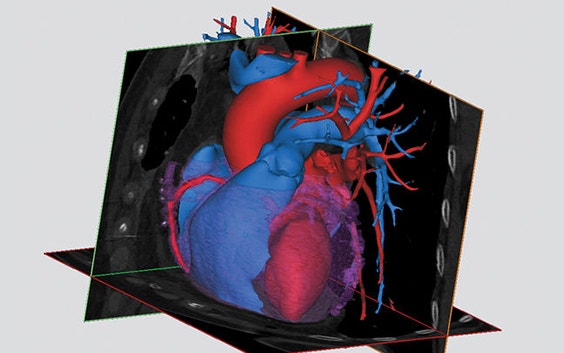PATIENT STORY
Why 3D-Printed Models Are a Beacon of Hope for Children with Congenital Heart Disease

In April 2017, a young patient with a serious cardiac deformity was the happy recipient of a successful heart surgery. His case was very complex, and the surgery entailed high risks. What made this surgery even more special, however, is that it was one of the first to be performed under the patronage of Little Hearts of China. This charity project brings in select young patients with congenital heart disease (CHD) from the western region of China and offers them advanced medical care that would otherwise not be available locally.


A life-changing beginning
One of the project's patients is fourteen-year-old Ma Chengqiang. He was born with the congenital heart defect Tetralogy of Fallot. In addition to the complexity of this disease, his late diagnosis made treatment very challenging.
When Ma’s local Qinghai doctor contacted Professor Liu Jinfen at the Shanghai Children's Medical Centre to include Ma in the Little Hearts of China project, Ma’s life changed forever. After his CT scan in China, the DICOM file was sent to Belgium, where a clinical engineer used dedicated software for segmentation, as well as creating an accurate anatomical replica. The virtual file was 3D printed at one of the Materialise ISO-certified facilities.
Access to advanced visualization and to a 3D-printed heart model played an essential part in understanding the pathology of the disease. Professor Liu Jinfen, an expert in pediatric CHD and the surgeon on the case, could examine the heart from all possible angles and get a clear visualization of the pathology.
“At present, in China, the incidence of congenital heart disease is about 4 to 7 percent. Each year, at the center, the number of congenital heart surgery cases in children is about 3,700, with a success rate of 98%. However, out of all our contacts with congenital heart disease, about 3% of the cases are extremely complex. Surgical difficulty and risk of surgery will be much higher than an ordinary congenital surgery,” says Professor Liu Jinfen, head of the center’s heart disease research institute.
Little Hearts of China project — a project with a big heart
To handle cases such as Ma's, the charity project Little Hearts of China was initiated by the Shanghai Children's Medical Centre, Materialise, and the Ai You Foundation. This Chinese-Belgian collaboration focuses on helping children from impoverished rural regions and is sponsored by Shanghai Children's Medical Centre and Materialise. In Ma's case, in addition to providing medical help, the charity project covered the family's travel and accommodation expenses. This ensured that he had emotional support from his family alongside his life-changing medical treatment.
The Little Hearts of China project has a mission to provide medical support for children living in Western China with complex congenital heart disease. Another equally important goal is that the project's medical and technical teams help to elevate the level of primary healthcare in remote areas of China.
Materialise is committed to this project and supports it by providing HeartPrint Research models for select patients. “We plan to support 15 to 20 children with complex CHD in the first phase of the project, that is, before August 2018, in this project,” said Kim Francois, General Manager of Materialise China.
Why 3D printing technology is important in congenital heart diseases
3D printing and advanced visualization bring obvious opportunities to pediatric cardiology and can help countless children who suffer from congenital heart disease. CHD surgeries are challenging on their own, given the small size of the heart and the immature immunity system of its tiny patients, and advanced visualization is key to this early planning. Simply put, according to Professor Liu Jinfen, "the technology is a beacon of hope for these children.”
Medical 3D printing technology offers doctors a more intuitive comprehension of individual cardiovascular anatomy structure, especially in patients with complex CHD. An in-depth analysis of cardiac morphology also encourages communication between the doctor and patient during the pre-surgical planning.
L-102834-01
Share on:
You might also like
Never miss a story like this. Get curated content delivered straight to your inbox.
